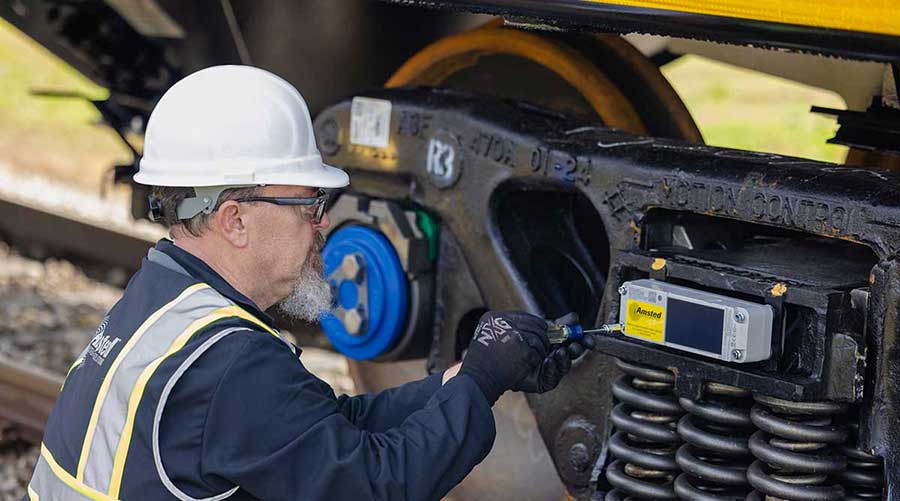Stay updated on news, articles and information for the rail industry
April 2013
Rail News: Rail Industry Trends
Railroad research reviewed at testing center's March event
— by Jeff Stagl, Managing Editor
Research and development is key to introducing new technologies that can help railroads boost productivity and improve safety. And the Association of American Railroads' Transportation Technology Center Inc. (TTCI) is a key North American proving ground for those technologies.
Once a year, TTCI conducts an "AAR Research Review" near its 52-square-mile testing facility in Pueblo, Colo., to provide updates on promising R&D projects.
The 18th annual edition was held on March 5 at the Pueblo Convention Center, followed by the annual "track walk" March 6 at TTCI, which enabled attendees to view demonstrations and displays along the 2.7-mile Facility for Accelerated Service Testing (FAST) track. A record 519 people registered for the event, of which 425 were on hand for the full conference and 405 attended the track walk.
The formal research review included 18 presentations and four panel discussions led by Class I executives.
Highlights And High Priorities
The aim of the presentations: to highlight emerging track, bridge and rail-car technologies designed to improve safety and efficiency, such as by reducing fuel consumption, extending rail life and preventing derailments, said TTCI Senior Vice President of Technology Semih Kalay.
"A high priority is improved rail welding methods to ensure a weld lasts as long as the rail," he said.
The dozens of emerging technologies mentioned during presentations included a thermite weld overlay treatment, remote-operated hand brake, half-frame concrete tie, next-generation insulated joint and integrated freight-car truck.
TTCI Senior Scientist David Davis described another during his presentation on special trackwork: a continuous mainline rail turnout. Tailored for use on industrial sidings, the turnout is designed to lift a car's wheels over a mainline so a train maintains a smooth ride, said Davis.
Last year, Progress Rail Services built a prototype turnout for BNSF Railway Co. that was tested for several months. Track strength testing at FAST revealed a weak spot that was addressed, said Davis, adding that BNSF now will test the turnout in revenue service.
While reviewing advanced bridge designs and materials, TTCI Principal Engineer Duane Otter highlighted a second-generation hybrid composite beam (HCB) bridge span that has performed well during TTCI tests and will advance to field testing.
BNSF plans to monitor a 42-foot HCB span on a bridge near Springfield, Colo., that accommodates coal and mixed freight traffic, and averages about 60 million gross tons per year, said Otter. The HCB combines conventional concrete and steel's strength and stiffness with lightweight and corrosion-resistant composites.
Figuring Out The Angles
Another technology showing promise in the R&D stage: a phased array ultrasonic rail-flaw inspection system, which can examine rail at multiple angles with one probe.
The Edison Welding Institute, which has phased array system expertise, partnered with TTCI to perform tests, said Principal Investigator II Matthew Witte.
The phased array system's field testing results "agreed well" with modeled predictions on locating track defects and defect sizing, said Witte, who also reviewed several other promising rail-flaw detection options.
Overall, the event's various presentations shed light on what has become vital to railroading: strengthening the industry through technology, said Union Pacific Railroad Vice President of Engineering Dave Connell, who moderated a panel discussion on track technology solutions.


 LRW Honors Amtrak’s Acheson As Railway Woman Of The Year
LRW Honors Amtrak’s Acheson As Railway Woman Of The Year
 From Editor-In-Chief Foran: Of Gender Equity And Inclusion
From Editor-In-Chief Foran: Of Gender Equity And Inclusion
 Spotlight On Some Of Today’s Rail Safety Products
Spotlight On Some Of Today’s Rail Safety Products
 Women of Influence in Rail eBook
Women of Influence in Rail eBook
 railPrime
railPrime






